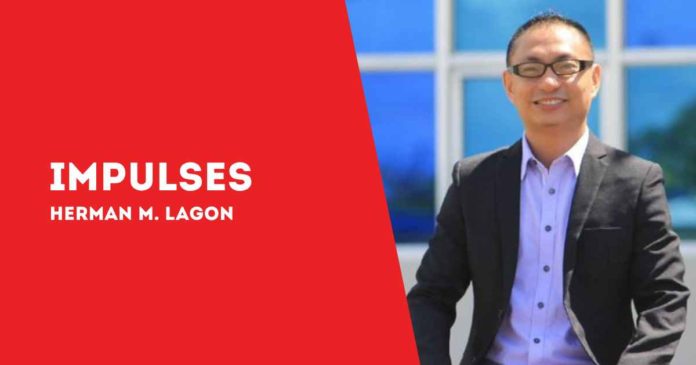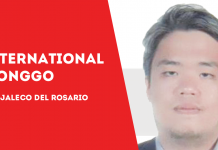
BY HERMAN M. LAGON
METONYMY, often overshadowed by its flamboyant cousin metaphor, is a figure of speech where a concept is not called by its own name, but rather by something closely associated with it. Imagine referring to the corporate world simply as “the suits” or to artistic masterpieces residing in “the Louvre.” This linguistic tool encapsulates a wealth of meaning and context in a single, efficient expression. It turns the complex machinery of language into something as simple as “turning a key.”
Meet Julius, a senior high school student facing the daunting task of penning an essay for his literature class, known affectionately among students as “the den of critics.” The assignment: explore and use figures of speech, with a focus on metonymy. As he stares at the blank document, the cursor blinking back at him like the ticking of “the clock,” the pressure mounts. But it is more than just an assignment; it is a chance to impress his teacher, the “guardian of grammar.”
While brainstorming, Julius remembers his father, a journalist, often mentioning “the pen” as mightier than the sword. Intrigued, Julius dives into the world of metonymy, discovering its power not just in literature, but in everyday language—like calling dinner “a dish” or referring to customer complaints as “hearing from the front desk.” Each example, a “brick” in the foundation of his understanding.
As Julius types, his essay transforms. He writes about “the Malacañang announcing” rather than the President, and “Wall Street panicking” instead of the stock market traders. Each sentence sparkles with the clarity and efficiency of metonymy, turning his essay into a vibrant tapestry of implied meanings, a “gallery” of expressions.
Julius explores how metonymy simplifies complex concepts, making them accessible. He notes that in professional realms, such as law or journalism, these shortcuts allow experts to communicate intricate ideas swiftly and with precision—a necessity in fields where “time is money” and clarity is “the key.”
He illustrates how writers harness metonymy to enrich their narratives, giving depth to their characters and settings without lengthy descriptions. For instance, a novelist might refer to the executive department simply as “the Palace,” evoking an entire realm of power and tradition in two words, or “the bench” for the judiciary.
With a mix of nervousness and pride, Julius submits his essay via “the portal” — the school’s digital submission system. He reflects on how metonymy, this simple figure of speech, has unveiled a new dimension of language for him, one that carries more than just aesthetic value; it bears practical utility, like “the keys to the kingdom.”
“The grammar gatekeeper” is impressed. She commends Julius not only on his understanding of metonymy but on his ability to apply it so effectively across different contexts, demonstrating both creativity and comprehension, a “masterstroke” in his academic journey.
The article then shifts focus, discussing how metonymy enhances everyday communication. Whether it is “the press” being blamed or praised, these figures of speech shape perceptions subtly but powerfully, influencing public opinion and cultural norms, serving as “the voice” of the people.
In professional settings, metonymy becomes a linguistic shortcut that enhances discussion and documentation. Doctors discuss “the heart” not just as an organ but as a symbol of life and vitality, while tech professionals talk about “the server” taking on almost human attributes of workload and capacity, a “beast of burden.”
Julius’s exploration points out that metonymy also fosters cultural literacy and cognitive development. It encourages a deeper engagement with language, prompting users to think critically about the links between words and their meanings, a “map” for navigating language.
In his concluding remarks, Julius reflects on how metonymy, this modest stylistic device, has broadened his understanding of language. It is not just a literary ornament but a functional tool that enriches communication, sharpens cognitive skills, and deepens cultural awareness, “illuminating the path” of language exploration.
We end with Julius receiving his graded paper, marked with an “A” and a note: “Excellent exploration of ‘the chief’s strategy’—metonymy at its best.” He realizes that this assignment was more than just a school task; it was a journey into the heart of language itself, one that taught him the power of words and the art of expression, turning him into “the architect” of his own linguistic creations.
Through Julius’s narrative, we witness the practicality and beauty of metonymy, observing its role not just in academic settings but as a vital component of effective and impactful communication, a “bridge” connecting thoughts to words.
***
Doc H fondly describes himself as a ‘student of and for life’ who, like many others, aspires to a life-giving and why-driven world grounded in social justice and the pursuit of happiness. His views do not necessarily reflect those of the institutions he is employed or connected with./PN



